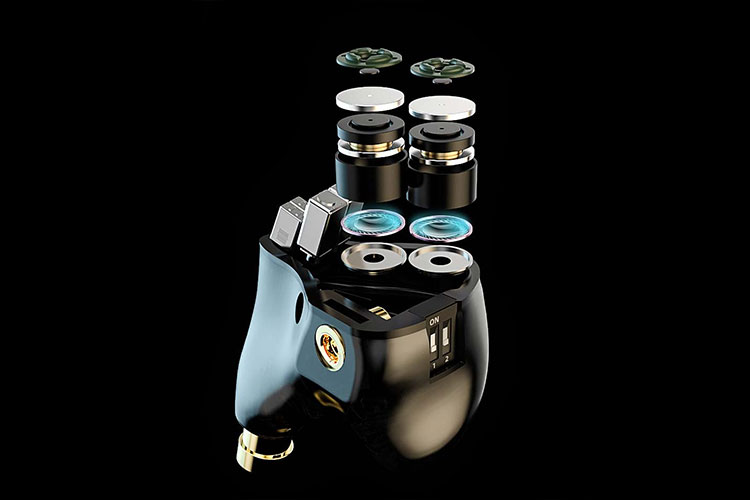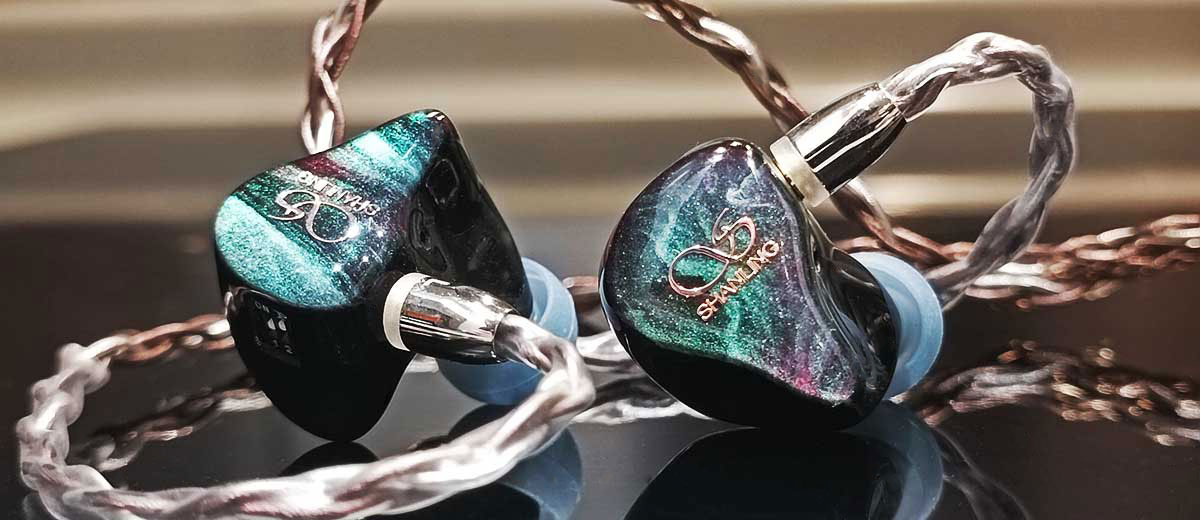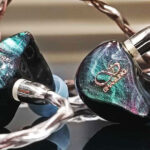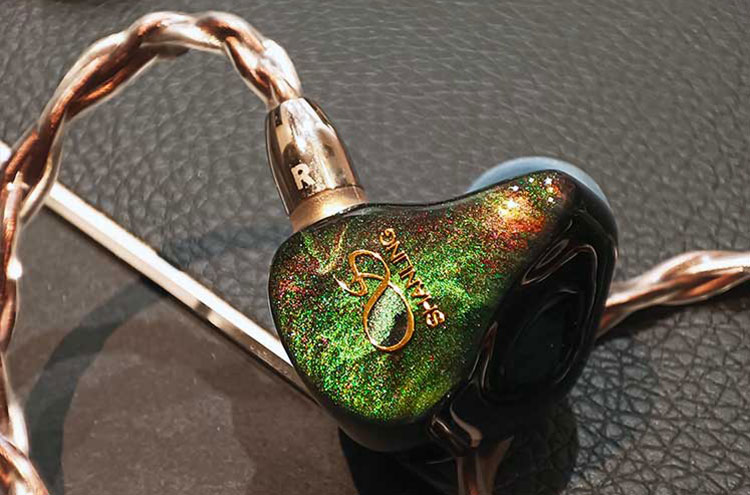In this feature, we review the Shanling ME800, which is the company’s latest flagship universal IEM with a double dynamic and quad BA driver configuration. It is priced at $779.
Disclaimer: This was sent to us as a sample for our honest opinion. Headfonics is an independent website with no affiliate links or services We thank the team at Shanling for giving us this opportunity.
To read more about Shanling products we have highlighted before on Headfonics click here.
Note, this article follows our latest scoring guidelines which you can read up on here.
The ME800 is Shanling’s latest top-of-the-line model with a 6-driver configuration built upon the experience and feedback from the previous ME700 and ME700Lite. Like these aforementioned IEMs, the ME800 will also require a powerful DAP or an amp to get the best out of this beast.
Using an octa-core Furukawa single crystal copper cable and switchable connectors, the ME800 does seem to offer an even better value proposition for the price over the previous flagships.
For those who are looking for very expressive and intense vocal performance and are equipped with powerful daps like the M9, the ME800 should be worth a demo.

Tech Highlights
The Shanling ME800 driver configuration is a set of two 6mm dynamic drivers with crystal-plated bio-membranes as well as 4 custom balanced armatures. The double DD count is the key for bigger but more controlled bass than the predecessor ME700 which houses a larger and harder-to-drive single dynamic driver.
Beyond the new configuration, the ME800 is user-configurable with a pair of toggle switches on each side of the IEM bodies, achieving a total of four different tuning profiles that adds to its versatility pairing with different gears and listening preferences
According to Shanling, the official favorite is the “Vocal” preset with the treble button switched on, which actually changes the behavior of the treble frequencies and rolls off less sharply. The bass switch, on the other hand, gives some mid-bass frequencies a gentle nudge without blurring over the upper frequencies or killing the air.
In practice, there are audible differences in the roll-off behavior and the perceived intensity of the lows when experimenting with different presets. Ideally, this should enhance the flexibility of the ME800 to pair with different DAPs with varying tuning approaches and power.
Design
There are two designs that can be selected, ‘Desert’ and ‘Forest’. These hand-crafted faceplates are beautiful to look at, like a miniature forest layered on top of the IEM.
I like this subtle and elegant approach compared to alternative metallic casings as it feels more unique being crafted by hand individually. The barrels and splitter on the cable are finely machined on par with some premium aftermarket cables that have a unique design.
On each side of the earphone bodies, you will find two switches for setting the below profiles:
- Balanced
- Warm
- Vocal
- Clear
Comfort & Isolation
The ME800 earpieces are medium-sized and should fit most ears without any issues while providing decent passive noise cancellation. The housing does not stress the outer ear after hours of listening and the cable is soft enough to hang over the ear without causing any pain or discomfort.
Tips
Good fitting and isolation come hand in hand with the tip selection and Shanling is always generous with the selection of tips that goes with their earphones. Users can choose from 4 sets of tips to fine-tune the earphone and be reminded, a good seal may yield the best result.
In the ME800’s case, I would recommend the vocal tips as they sound natural and smooth. With the many sets of tips supplied the tuning is not limited to 4 presets and users can always fine-tune by rolling the tips.
Stock cable
Beyond user-configurable tuning profiles, users can switch between different audio connectors within seconds on the brand-new octa-core Furukawa single crystal copper cable terminated with MMCX plugs on the other end. This 8-core cable ups the performance of the IEM especially in its dynamic range and resolution in the lows.
When switching between different connectors you will hear a clean click when it locks. The cable, on the other hand, is soft and has a rather thick gauge that makes it feel slightly hefty. Together with the modular system, this is a generous offering that has good synergy in both the sound domain and the appearance of the IEM.
Packaging and Accessories
All Shanling flagship products come in luxurious packages and the ME800 is no exception. Inside the gift box, you will also find a metal plate that explains the tuning profiles.
Digging into the lower compartment you will find the interchangeable plugs, 6.3mm convertor, cleaning brush, leather carrying case, manuals as well as four sets of tips.
The huge leather case, in particular, is well made and feels very smooth and premium to the touch. There is also a lot of room inside and you could pack in all the accessories and the IEM without any issues.
Sound Impressions
Summary
Out of the box, the ME800 has a W-shaped signature leaning more to the lower end. The treble is very well controlled and shows no sign of sibilance while not falling short in intensity, yet the dynamic drivers or the cable makes it sound slightly compressed.
After burning in more than 100 hours using an M9 it clears up and the midrange frequency sounds a lot more naturally defined, with strong stereo imaging and realistically weighted, full-bodied vocals.
Playing with the toggles there is an audible difference that could be very useful in putting listeners in different moods and matching various genres of music. I enjoy in particular the Vocal tuning and the Warm tuning which as distinctively sweet in vocal and dense in the midrange.
The strong mid-bass intensity enables the ME800 to be very expressive with bassy instruments and synthesized bass, as well as drums. While the bass response is agile, the other frequencies aren’t covered up under all 4 tuning profiles especially when you switch to the balanced mode as well as the clear mode that gives the upper mids more edges and strengthens the resolution.
The ME800 practically gives the listener the choice to switch between different tunings but you will always detect intense mid lows in its veins.
I usually pick the balanced tuning for home use and it works pretty much with any music being played. When outdoors, the vocal tuning would be my recommendation, which brings out the full potential of the design and strives for a good balance between tonal balance and clarity.
Bass
On the stock Vocal preset the bass has plenty of energy and an agile impact speed along with its powerful punch. The two dynamic drivers that cover the bass and midrange deliver high bass intensity with some very smooth punches and a strong density.
The bass is quite controlled towards the lower end with a powerful impact and airy decay. It is easy to detect rumble below 50Hz, especially with the Warm tuning option that performs high-cut to bring out more low-end presence, authorizing the bass to punch with stronger power.
With all tuning profiles, the mid-bass is remarkably full and intense in the body. It is also well layered with the vocal tuning, giving it the ability to sound very engaging and rich in detail with bass-intensive tracks.
Lighter voices are energized with extra weight and the ME800 communicates well the feelings associated with expressive tunes. Chamber resonances, as well as plucked strings in the recordings, are clearly presented and boost the presence of acoustic instruments.
Mids
Articulation to the mids is buttery smooth with the dynamic drivers texture covering both the lows and the mids. Under the Vocal configuration, the mids are powerful, rich in details, and sound very life-like with the said fullness and strong weight.
Croaky voices are particularly elaborated in this case and the ME800 is tuned to remove all edges using the Vocal tuning profile while offering decent flexibility to switch to the Clear tuning for those who seek a hotter, sharper tone.
With the Balanced setting the lower end is more tamed and higher frequencies cut through easier, not only the midrange goes under the spotlight but the bigger picture is framed.
The Clear setting sounds more V-shaped and better suits classical music or songs that don’t stress the vocal line. With the Balanced tuning profile, the staging is also more opened-up compared to using the Vocal tuning profile.
With all tuning profiles, the ME800 is responsive to high amplitude transients with excellent control similar to the qualities from a multi-BA IEM with dedicated drivers for the mid-bass.
Treble
The ME800 is doubtlessly very potent in bass and midrange departments. However, the treble is surprisingly strong in detail retrieval, carefully tuned to complement the intense low end without bringing out any harshness or coherence issue under the Clear mode or Vocal tuning mode that rounds the treble quite sharply.
If you want more air, switch the treble switch on and you will hear even stronger and more exciting transients in the upper register. Strings and woodwinds empowered to sound even more intensified, cutting through the mix with brilliance and strong intensity but still able to hold themselves from peaking.
This also opens up the staging a bit more and pushes forward the technicalities of the hybrid design.
Staging
The Clear tuning that stresses dynamics and a more V-shaped signature, as well as the Balance tuning that does not strongly emphasize the midrange and stretched the extension, gives the most opened-up staging performance.
There is good flexibility with the ME800 for users to choose from. Users can decide whether to focus on the vocalist and midrange instruments, or a bigger picture that has different frequencies more evenly weighted.
My own preference is to sacrifice some of the openness for the sweet, big vocal image that defines ME800’s character. With the Vocal tuning, you can hear a strong stereo image with defined positioning.
You can hear the change in the intensity level of an instrument for example the bowing actions on violins and string plucking on the double bass, which sounds realistically textured and 3D.
The richness in the midrange frequencies brings more elements upfront. Although it is far from being congested especially when driven well, you may find the perceived stage most suitable for smaller ensembles and small bands, which could already fill the rendered stage.
Click on page 2 below for sound impressions and select comparisons







